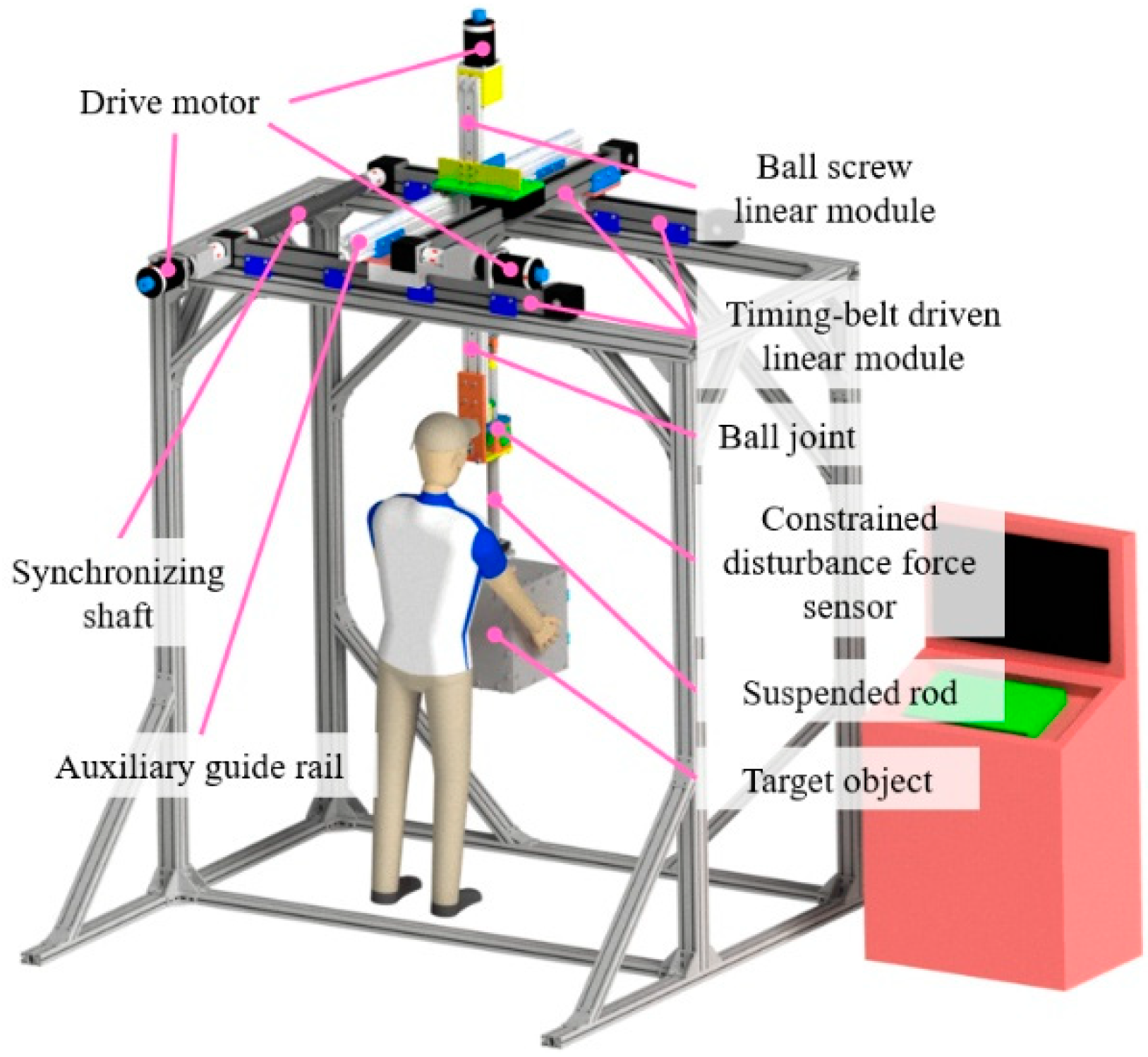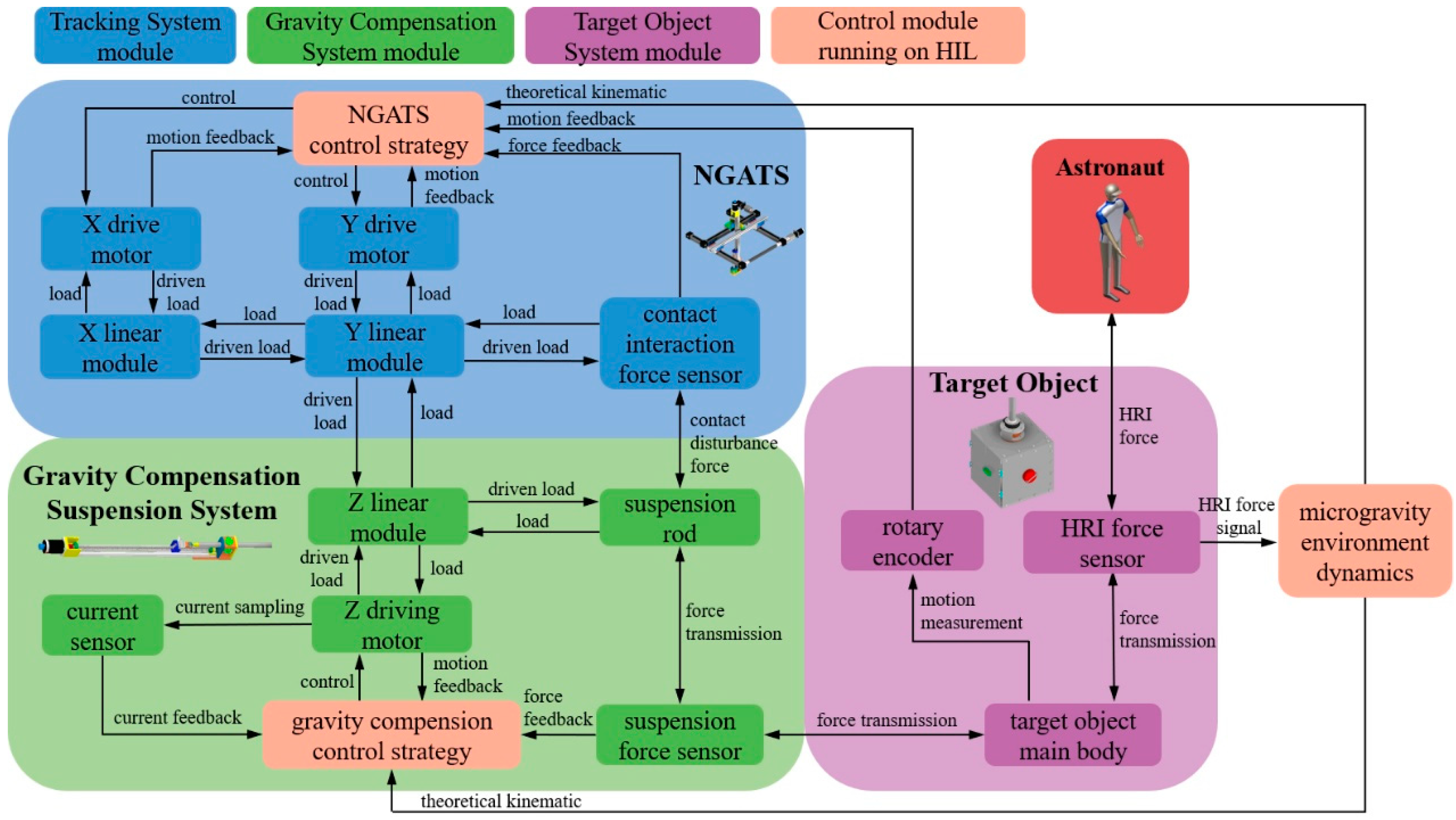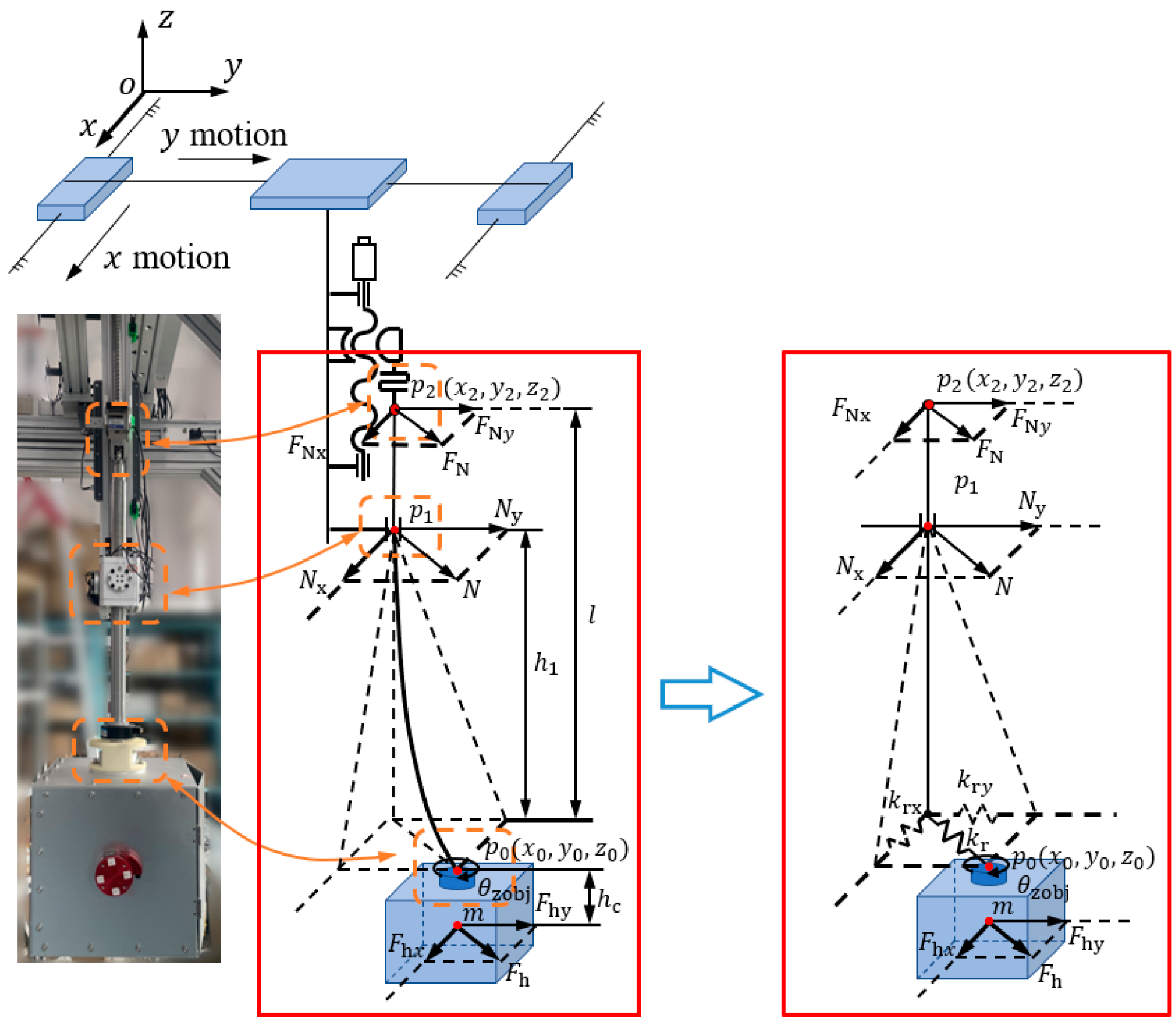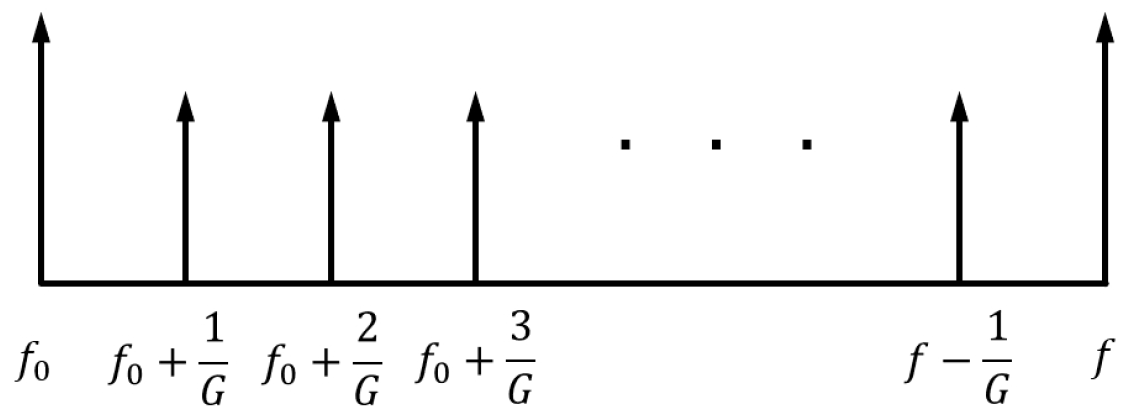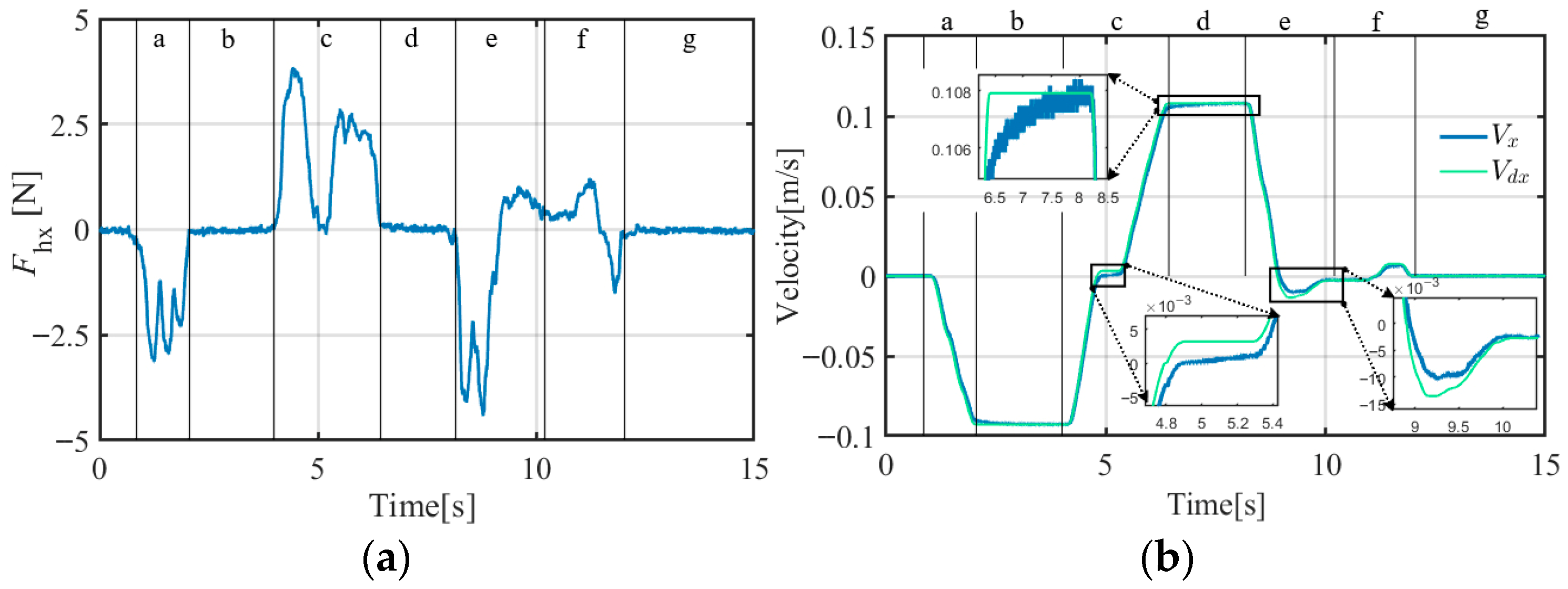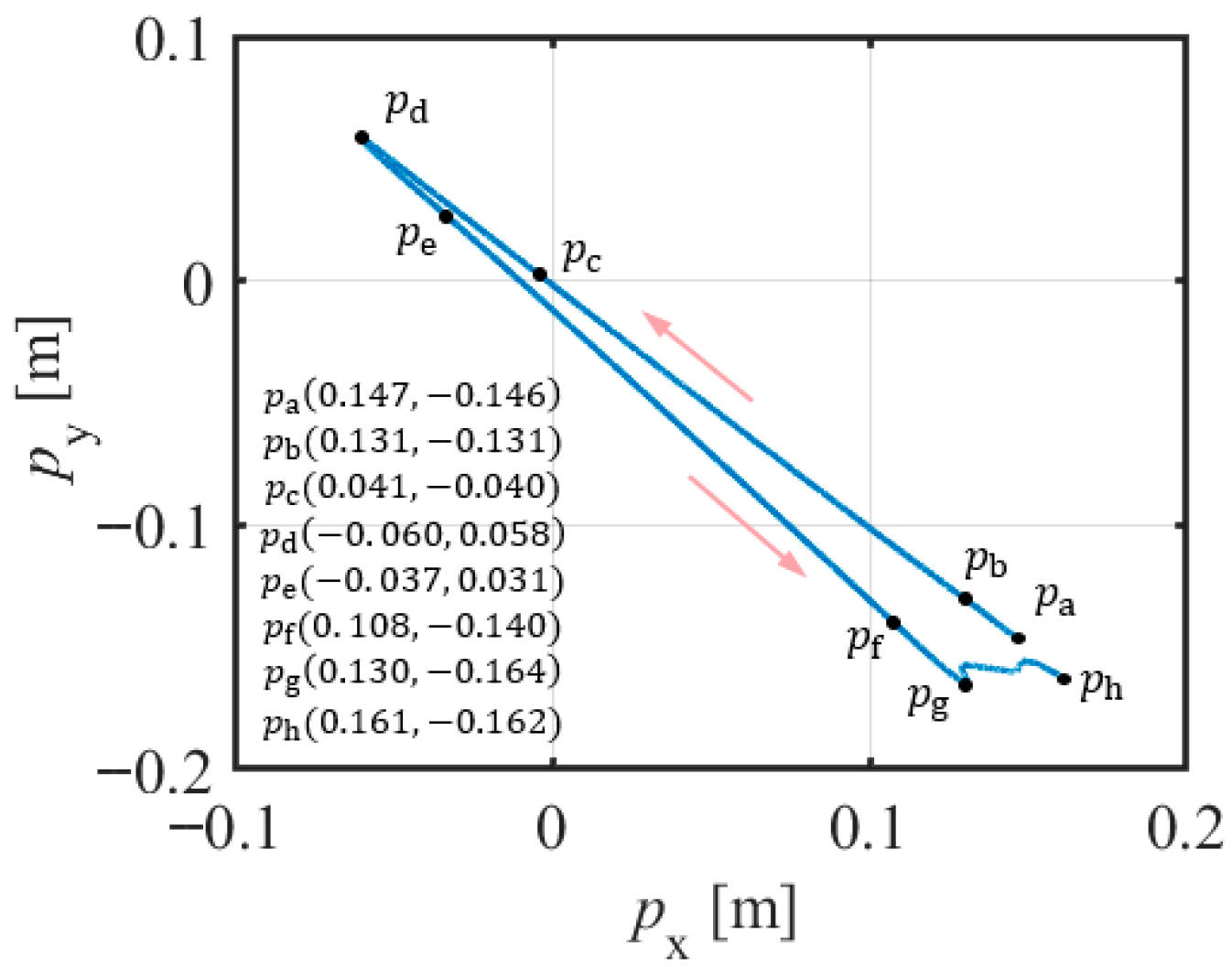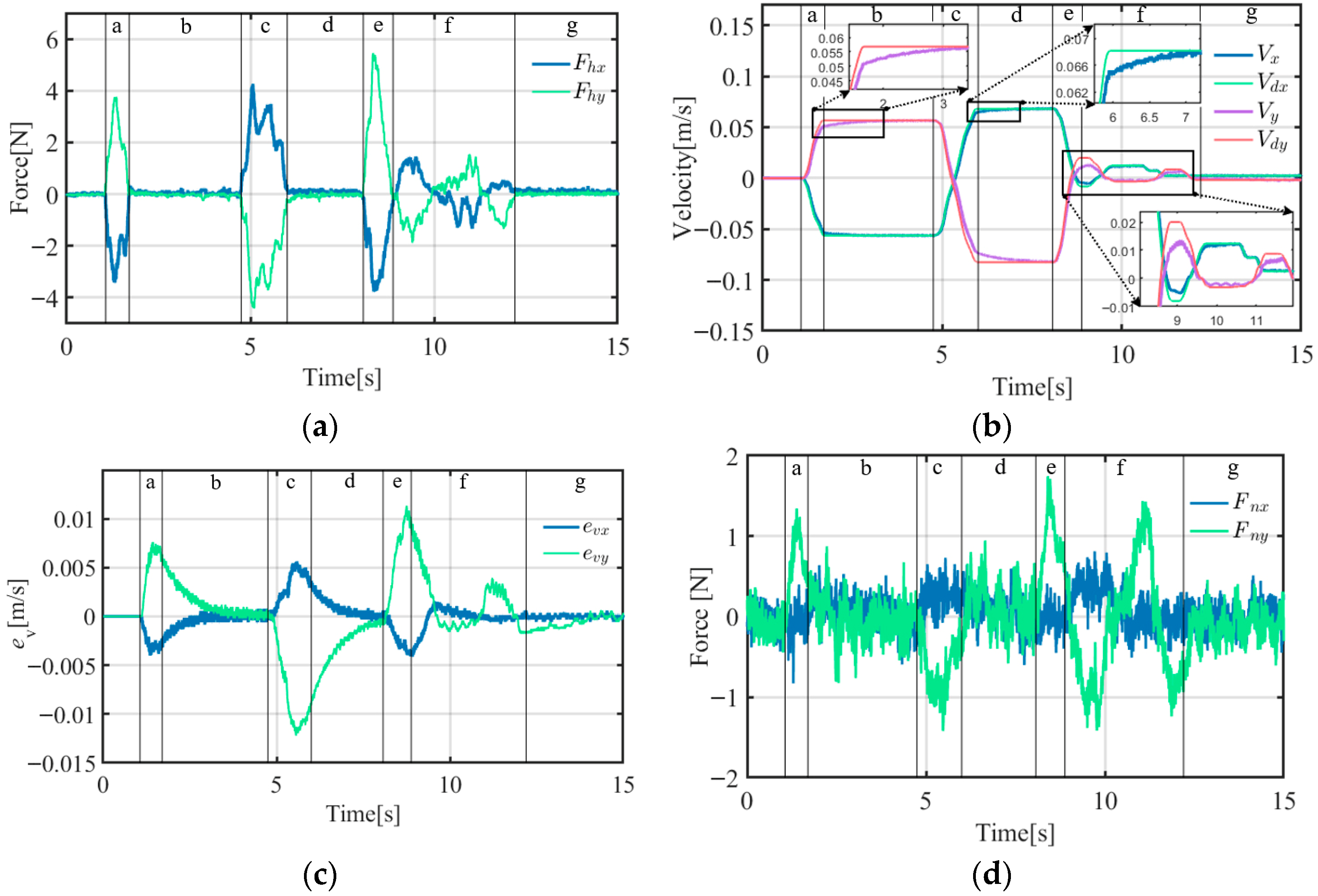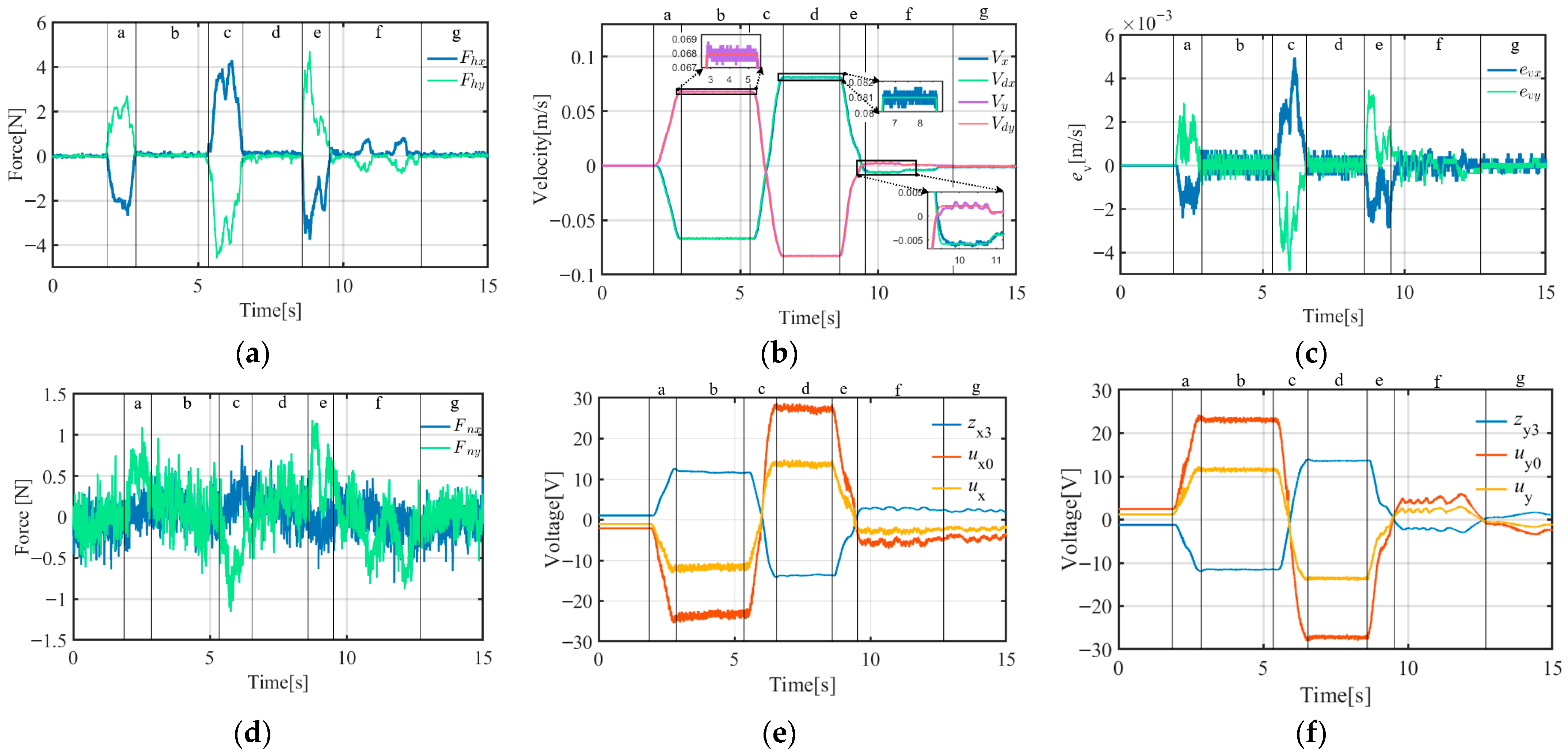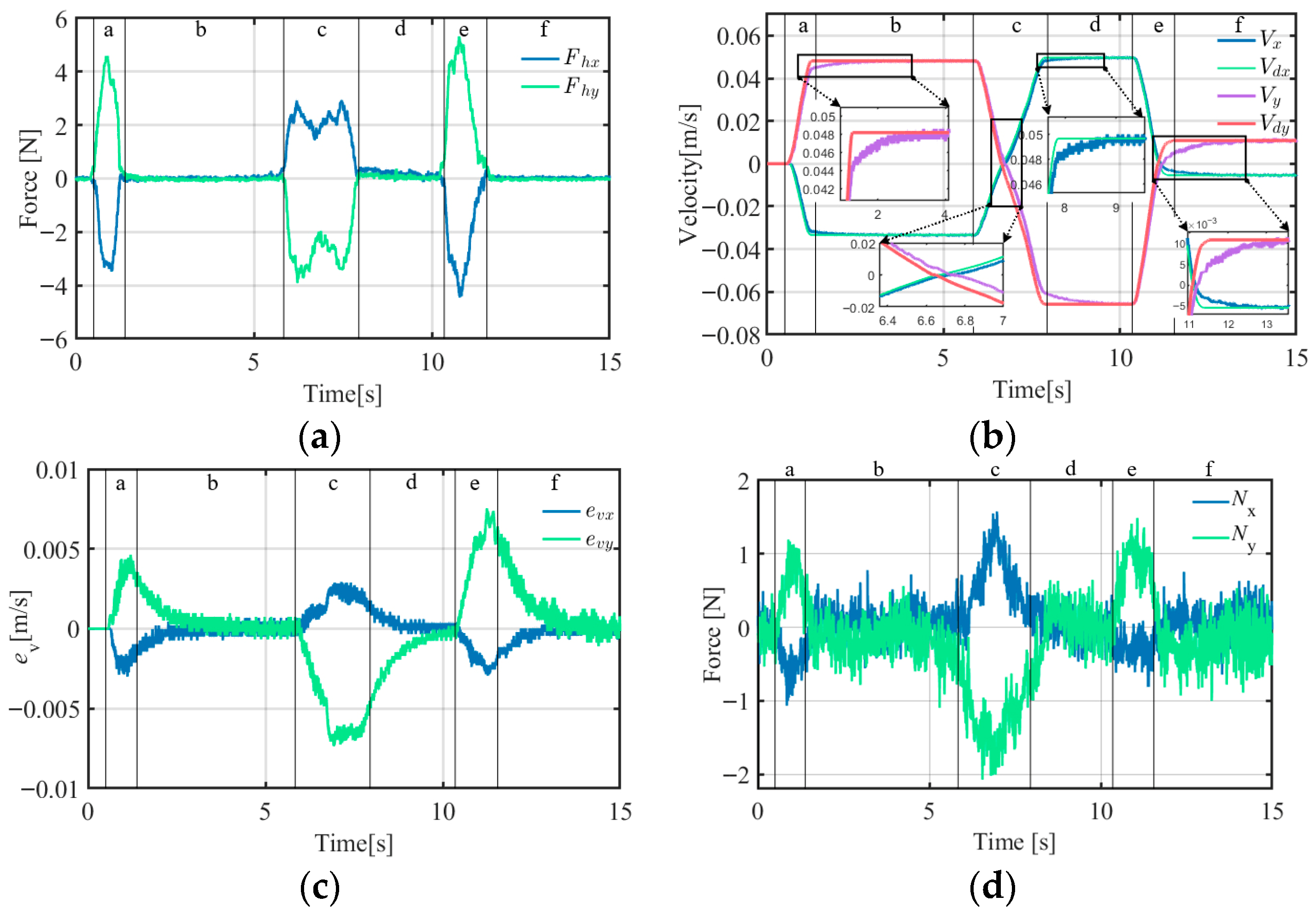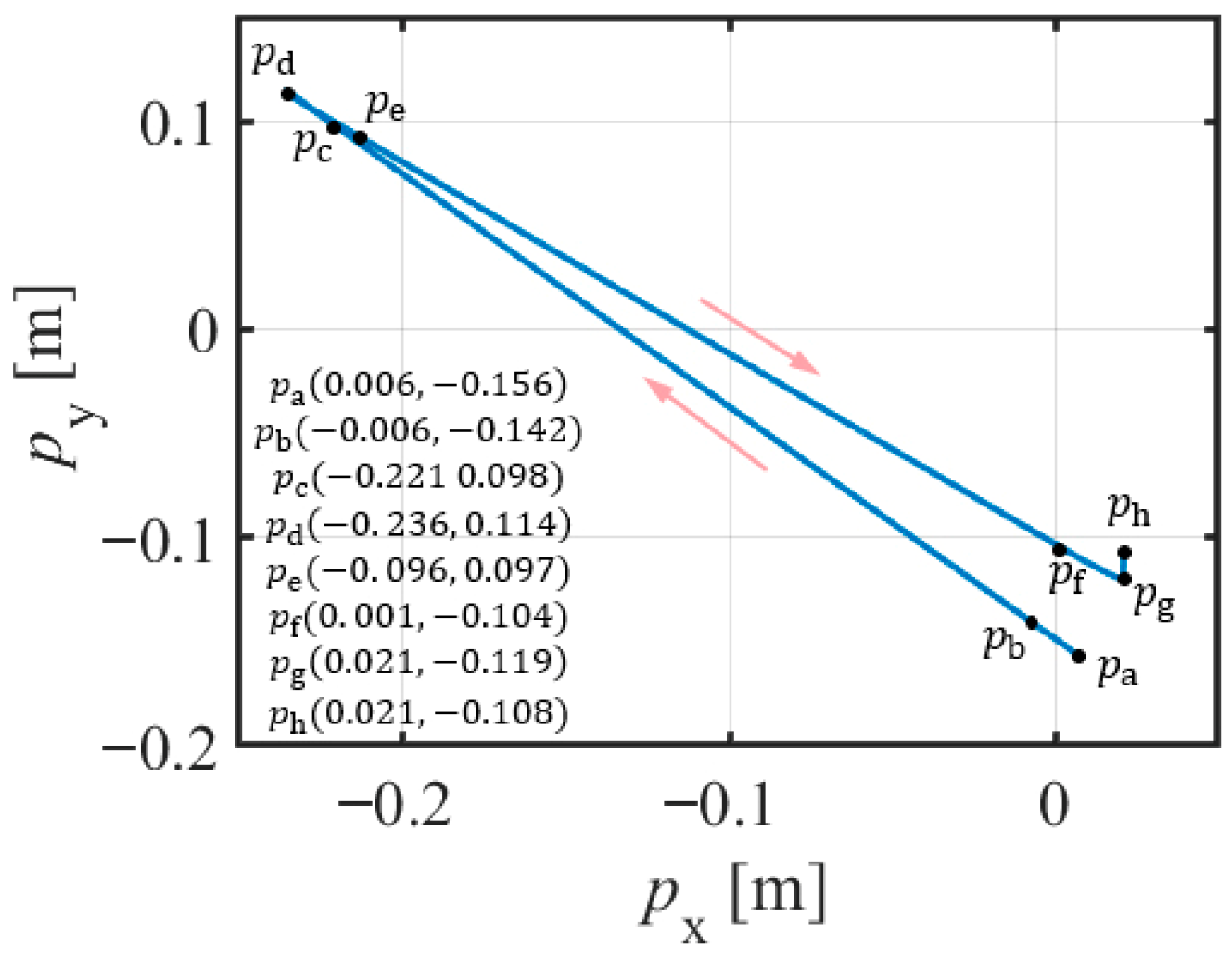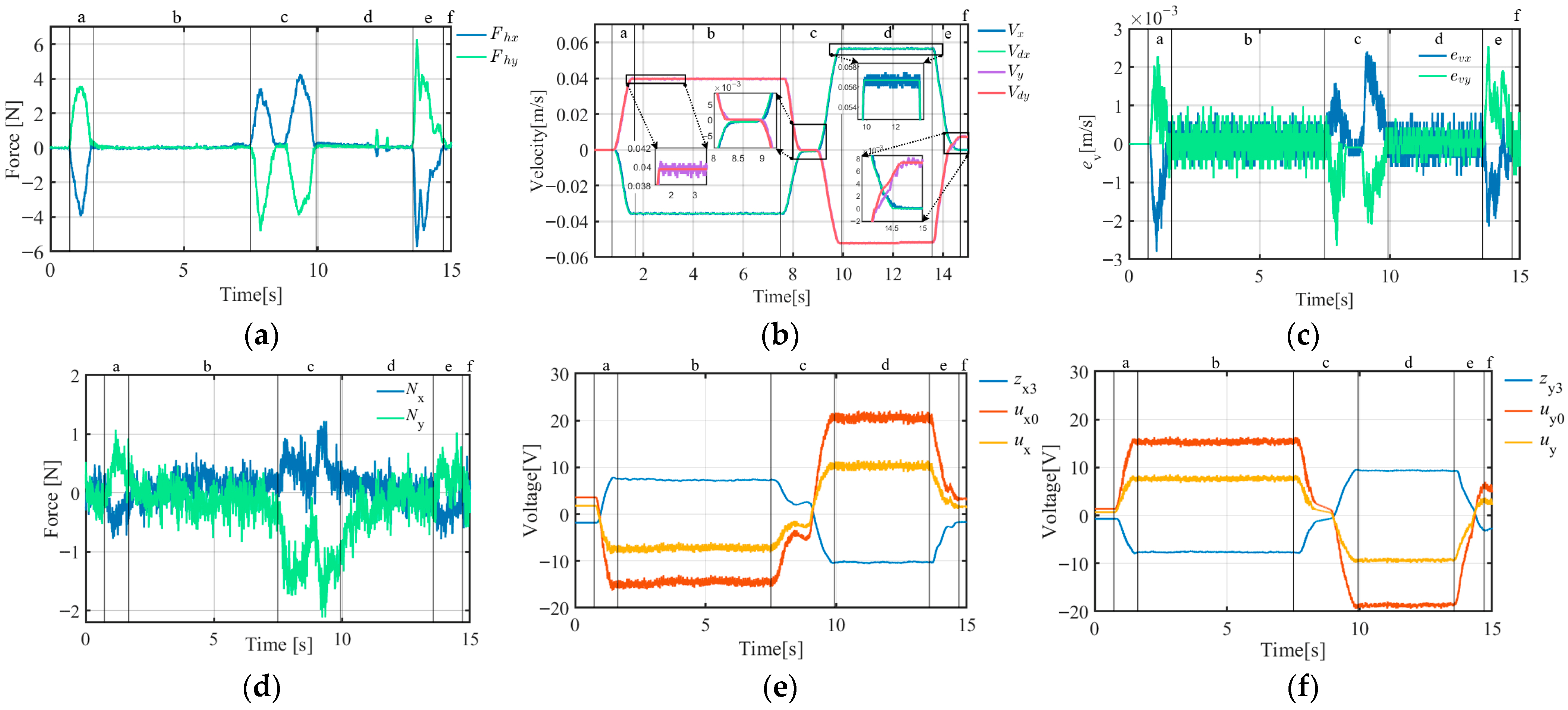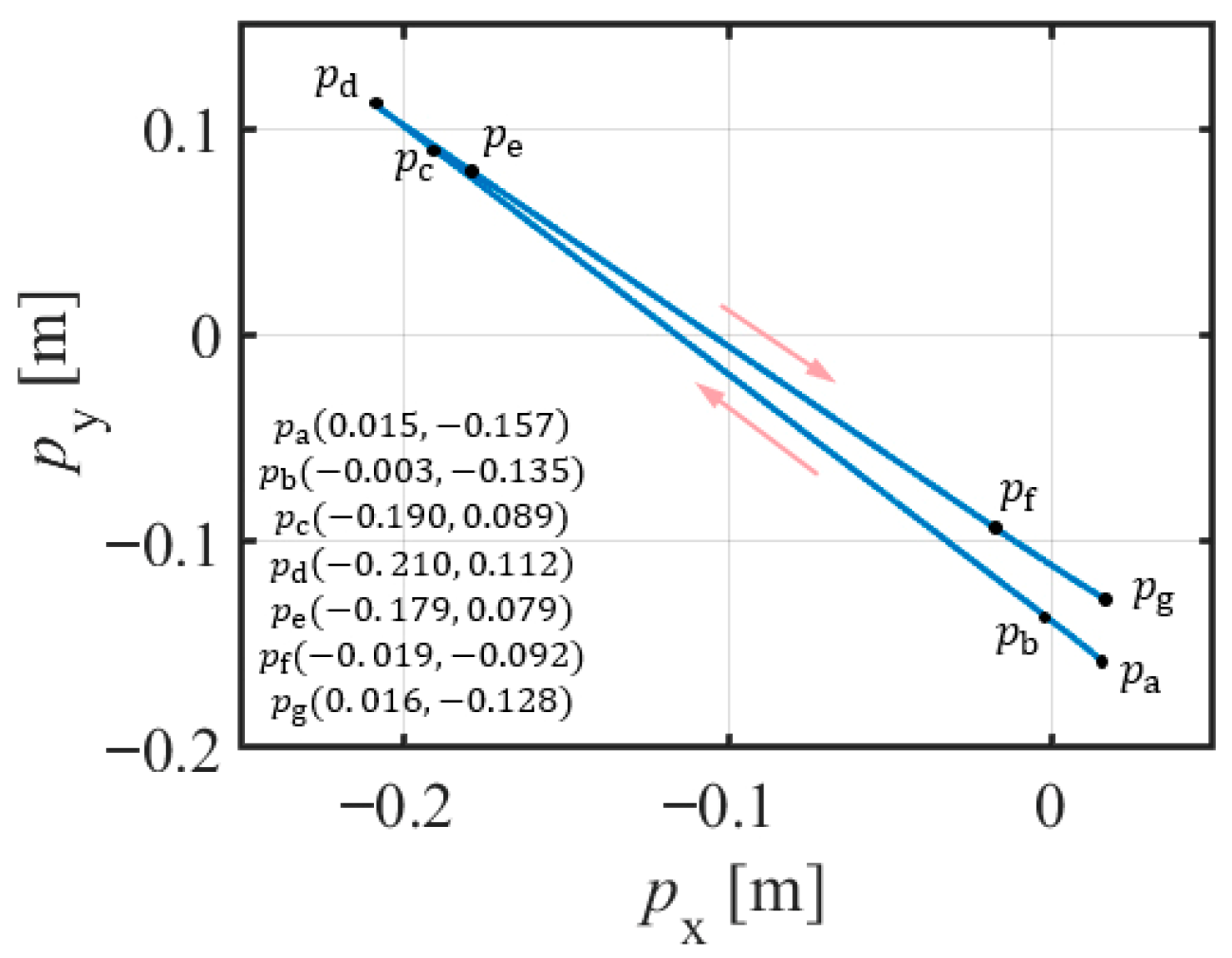Figure 1.
Overall structure of the rigid suspension-type astronaut operational training system (RSAOTS).
Figure 1.
Overall structure of the rigid suspension-type astronaut operational training system (RSAOTS).
Figure 2.
RSAOTS: (a) overall structure; (b) gravity compensation suspension system (GCSS); (c) connection and sensors on GCSS; (d) non-gravity axes tracking system (NGATS); (e) constraint disturbance force sensor.
Figure 2.
RSAOTS: (a) overall structure; (b) gravity compensation suspension system (GCSS); (c) connection and sensors on GCSS; (d) non-gravity axes tracking system (NGATS); (e) constraint disturbance force sensor.
Figure 3.
Schematic diagram of the RSAOTS.
Figure 3.
Schematic diagram of the RSAOTS.
Figure 4.
The transmission structure of the NGATS.
Figure 4.
The transmission structure of the NGATS.
Figure 5.
Schematic diagram of the NGATS.
Figure 5.
Schematic diagram of the NGATS.
Figure 6.
Effect of suspension rod deflection on the system when an operating force is applied.
Figure 6.
Effect of suspension rod deflection on the system when an operating force is applied.
Figure 7.
Block diagram of the composite compliant control strategy.
Figure 7.
Block diagram of the composite compliant control strategy.
Figure 8.
Band-limited multiple Fourier linear combiner (BMFLC) fundamental frequency point distribution.
Figure 8.
Band-limited multiple Fourier linear combiner (BMFLC) fundamental frequency point distribution.
Figure 9.
BMFLC structure.
Figure 9.
BMFLC structure.
Figure 10.
BMFLC filtering results: (a) signal before filtering; (b) separated tremor signal; (c) signal after filtering.
Figure 10.
BMFLC filtering results: (a) signal before filtering; (b) separated tremor signal; (c) signal after filtering.
Figure 11.
Electrical hardware structure.
Figure 11.
Electrical hardware structure.
Figure 12.
X-direction experimental curves for the human–robot interaction (HRI) force admittance controller and proportional–integral–derivative (PID) speed controller (A-PID; target object mass = 17.5 kg): (a) operating force curve; (b) velocity curve; (c) velocity error curve; (d) constraint disturbance force curve.
Figure 12.
X-direction experimental curves for the human–robot interaction (HRI) force admittance controller and proportional–integral–derivative (PID) speed controller (A-PID; target object mass = 17.5 kg): (a) operating force curve; (b) velocity curve; (c) velocity error curve; (d) constraint disturbance force curve.
Figure 13.
X-direction experimental curves for the HRI force admittance controller plus the active disturbance rejection controller (ADRC) composite control strategy (A-ADRC: target object mass = 17.5 kg): (a) operating force curve; (b) velocity curve; (c) velocity error curve; (d) constraint disturbance force curve; (e) output of ESO (), NLSEF (), and ADRC () curves.
Figure 13.
X-direction experimental curves for the HRI force admittance controller plus the active disturbance rejection controller (ADRC) composite control strategy (A-ADRC: target object mass = 17.5 kg): (a) operating force curve; (b) velocity curve; (c) velocity error curve; (d) constraint disturbance force curve; (e) output of ESO (), NLSEF (), and ADRC () curves.
Figure 14.
X-direction experimental curves for the HRI force admittance controller plus the ADRC and constraint disturbance force controller (ACDFC) composite control strategy (ACDFC-ADRC; target object mass = 17.5 kg): (a) operating force curve; (b) velocity curve; (c) velocity error curve; (d) constraint disturbance force curve; (e) output of ESO (), NLSEF (), and ADRC () curves.
Figure 14.
X-direction experimental curves for the HRI force admittance controller plus the ADRC and constraint disturbance force controller (ACDFC) composite control strategy (ACDFC-ADRC; target object mass = 17.5 kg): (a) operating force curve; (b) velocity curve; (c) velocity error curve; (d) constraint disturbance force curve; (e) output of ESO (), NLSEF (), and ADRC () curves.
Figure 15.
X-direction A-PID experimental curves (target object mass = 37.5 kg): (a) operating force curve; (b) velocity curve; (c) velocity error curve; (d) constraint disturbance force curve.
Figure 15.
X-direction A-PID experimental curves (target object mass = 37.5 kg): (a) operating force curve; (b) velocity curve; (c) velocity error curve; (d) constraint disturbance force curve.
Figure 16.
X-direction A-ADRC experimental curves (target object mass = 37.5 kg): (a) operating force curve; (b) velocity curve; (c) velocity error curve; (d) constraint disturbance force curve; (e) output of ESO (), NLSEF (), and ADRC () curves.
Figure 16.
X-direction A-ADRC experimental curves (target object mass = 37.5 kg): (a) operating force curve; (b) velocity curve; (c) velocity error curve; (d) constraint disturbance force curve; (e) output of ESO (), NLSEF (), and ADRC () curves.
Figure 17.
X-direction ACDFC-ADRC experimental curves (target object mass = 37.5 kg): (a) operating force curve; (b) velocity curve; (c) velocity error curve; (d) constraint disturbance force curve; (e) output of ESO (), NLSEF (), and ADRC () curves.
Figure 17.
X-direction ACDFC-ADRC experimental curves (target object mass = 37.5 kg): (a) operating force curve; (b) velocity curve; (c) velocity error curve; (d) constraint disturbance force curve; (e) output of ESO (), NLSEF (), and ADRC () curves.
Figure 18.
Direction of the operating force.
Figure 18.
Direction of the operating force.
Figure 19.
Motion trajectory of the target object (target object mass = 17.5 kg) during the A-PID experiment.
Figure 19.
Motion trajectory of the target object (target object mass = 17.5 kg) during the A-PID experiment.
Figure 20.
A-PID experimental curves (target object mass = 17.5 kg): (a) operating force curve; (b) velocity curve; (c) velocity error curve; (d) constraint disturbance force curve.
Figure 20.
A-PID experimental curves (target object mass = 17.5 kg): (a) operating force curve; (b) velocity curve; (c) velocity error curve; (d) constraint disturbance force curve.
Figure 21.
Motion trajectory of the target object (target object mass = 17.5 kg) during the A-ADRC experiment.
Figure 21.
Motion trajectory of the target object (target object mass = 17.5 kg) during the A-ADRC experiment.
Figure 22.
A-ADRC experimental curves (target object mass = 17.5 kg): (a) operating force curve; (b) velocity curve; (c) velocity error curve; (d) constraint disturbance force curve; (e) output of ESO (), NLSEF (), and ADRC () curves on the X-axis; (f) output of ESO (), NLSEF (), and ADRC () curves on the Y-axis.
Figure 22.
A-ADRC experimental curves (target object mass = 17.5 kg): (a) operating force curve; (b) velocity curve; (c) velocity error curve; (d) constraint disturbance force curve; (e) output of ESO (), NLSEF (), and ADRC () curves on the X-axis; (f) output of ESO (), NLSEF (), and ADRC () curves on the Y-axis.
Figure 23.
Motion trajectory of the target object (m = 17.5 kg) during the ACDFC-ADRC experiment.
Figure 23.
Motion trajectory of the target object (m = 17.5 kg) during the ACDFC-ADRC experiment.
Figure 24.
ACDFC-ADRC experimental curves (target object mass = 17.5 kg): (a) operating force curve; (b) velocity curve; (c) velocity error curve; (d) constraint disturbance force curve; (e) output of ESO (), NLSEF (), and ADRC () curves on the X-axis; (f) output of ESO (), NLSEF (), and ADRC () curves on the Y-axis.
Figure 24.
ACDFC-ADRC experimental curves (target object mass = 17.5 kg): (a) operating force curve; (b) velocity curve; (c) velocity error curve; (d) constraint disturbance force curve; (e) output of ESO (), NLSEF (), and ADRC () curves on the X-axis; (f) output of ESO (), NLSEF (), and ADRC () curves on the Y-axis.
Figure 25.
Motion trajectory of the target object (target object mass = 37.5 kg) during the A-PID experiment.
Figure 25.
Motion trajectory of the target object (target object mass = 37.5 kg) during the A-PID experiment.
Figure 26.
A-PID experimental curves (target object mass = 37.5 kg): (a) operating force curve; (b) velocity curve; (c) velocity error curve; (d) constraint disturbance force curve.
Figure 26.
A-PID experimental curves (target object mass = 37.5 kg): (a) operating force curve; (b) velocity curve; (c) velocity error curve; (d) constraint disturbance force curve.
Figure 27.
Motion trajectory of the target object (target object mass = 37.5 kg) during the A-ADRC experiment.
Figure 27.
Motion trajectory of the target object (target object mass = 37.5 kg) during the A-ADRC experiment.
Figure 28.
A-ADRC experimental curves (target object mass = 37.5 kg): (a) operating force curve; (b) velocity curve; (c) velocity error curve; (d) constraint disturbance force curve; (e) output of ESO (), NLSEF (), and ADRC () curves on the X-axis; (f) output of ESO (), NLSEF (), and ADRC () curves on the Y-axis.
Figure 28.
A-ADRC experimental curves (target object mass = 37.5 kg): (a) operating force curve; (b) velocity curve; (c) velocity error curve; (d) constraint disturbance force curve; (e) output of ESO (), NLSEF (), and ADRC () curves on the X-axis; (f) output of ESO (), NLSEF (), and ADRC () curves on the Y-axis.
Figure 29.
Motion trajectory of the target object (target object mass = 37.5 kg) during the ACDFC-ADRC experiment.
Figure 29.
Motion trajectory of the target object (target object mass = 37.5 kg) during the ACDFC-ADRC experiment.
Figure 30.
ACDFC-ADRC experimental curves (target object mass = 37.5 kg): (a) operating force curve; (b) velocity curve; (c) velocity error curve; (d) constraint disturbance force curve; (e) output of ESO (), NLSEF (), and ADRC () curves on the X-axis; (f) output of ESO (), NLSEF (), and ADRC () curves on the Y-axis.
Figure 30.
ACDFC-ADRC experimental curves (target object mass = 37.5 kg): (a) operating force curve; (b) velocity curve; (c) velocity error curve; (d) constraint disturbance force curve; (e) output of ESO (), NLSEF (), and ADRC () curves on the X-axis; (f) output of ESO (), NLSEF (), and ADRC () curves on the Y-axis.
Table 1.
Nomenclature for the NGATS.
Table 1.
Nomenclature for the NGATS.
| Symbol | Description | Unit |
|---|
| | |
| | |
| Mass of Y linear module | |
| and GCSS | |
| Equivalent rotational inertia on the X-axis motor spindle | |
| Equivalent rotational inertia on the Y-axis motor spindle | |
| Equivalent damping coefficient on the X-axis spindle | |
| Equivalent damping coefficient on the Y-axis spindle | |
| | |
| | |
| | |
| linear module | |
| linear module | |
| and the Y linear module | |
| and the Y linear module | |
Table 2.
BMFLC parameter selection.
Table 2.
BMFLC parameter selection.
| | | |
|---|
| 3 | 4 | 0.01 | 10 |
Table 3.
ADRC controller and constraint disturbance force controller parameters.
Table 3.
ADRC controller and constraint disturbance force controller parameters.
| Module | Parameters |
|---|
| X Linear Module | Y Linear Module |
|---|
| TD | | |
| ESO | ,
,
| ,
,
|
| NLSEF | ,
| ,
|
| CDFC | | |
Table 4.
PID controller parameters.
Table 4.
PID controller parameters.
| Module | Parameters |
|---|
| X Linear Module | Y Linear Module |
|---|
| PID | , , | , , |
Table 5.
Root mean squared error (RMSE) of speed in the X-direction control experiment.
Table 5.
Root mean squared error (RMSE) of speed in the X-direction control experiment.
| Mass | A-PID | A-ADRC | ACDFC-ADRC |
|---|
| 17.5 kg | | | |
| 37.5 kg | | | |
Table 6.
RMSE results of the constraint disturbance force in the X-direction control experiment.
Table 6.
RMSE results of the constraint disturbance force in the X-direction control experiment.
| Mass | A-PID (N) | A-ADRC (N) | ACDFC-ADRC (N) |
|---|
| 17.5 kg | | | |
| 37.5 kg | | | |
Table 7.
Speed RMSE of the three control strategies.
Table 7.
Speed RMSE of the three control strategies.
| Mass | | |
|---|
| A-PID | A-ADRC | ACDFC-ADRC | A-PID | A-ADRC | ACDFC-ADRC |
|---|
| 17.5 kg | | | | | | |
| 37.5 kg | | | | | | |
Table 8.
RMSE of the constrained disturbance forces.
Table 8.
RMSE of the constrained disturbance forces.
| Mass | | |
|---|
| A-PID | A-ADRC | ACDFC-ADRC | A-PID | A-ADRC | ACDFC-ADRC |
|---|
| 17.5 kg | 0.2089 | 0.1907 | 0.1828 | 0.5117 | 0.3446 | 0.3321 |
| 37.5 kg | 0.3090 | 0.2904 | 0.2775 | 0.6074 | 0.5243 | 0.5094 |
